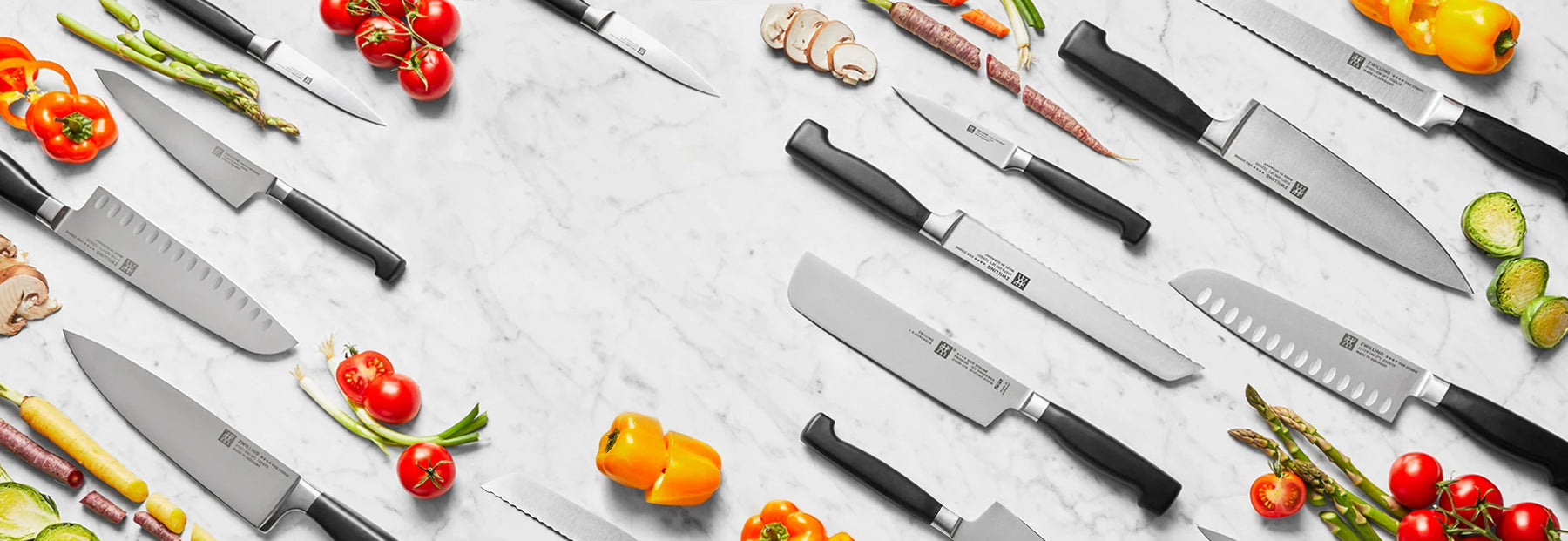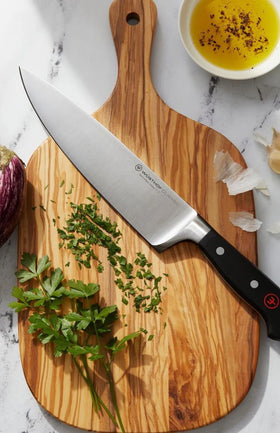
Top 8 Essential Types of Kitchen Knives
Understanding the Different Types of Kitchen Knives
In the realm of culinary artistry, getting the right kitchen knives is essential. From precision cuts to expertly carved masterpieces, the right kitchen knife can make the job easy and ensure it's done right, turning a mundane task into a creative endeavor . Understanding the types of kitchen knives available and their specific purposes can significantly enhance your culinary skills. In this blog post, we will explain the top 8 essential types of kitchen knives, unveiling their unique features and applications for your cooking needs.

1. Chef's Knife:
Chef's knives are characterized by their versatile design. With a broad blade typically ranging from 6 to 12 inches, it excels in chopping, slicing, and dicing a wide range of ingredients. Its curved blade facilitates a smooth rocking motion, enhancing efficiency and precision. View More
2. Paring Knife
Compact and agile, the paring knife boasts a short blade of about 3 to 4 inches. This knife is ideal for intricate tasks such as peeling, trimming, and shaping fruits and vegetables. The paring knife’s fine point allows for delicate maneuvering, making it an essential knife for intricate garnishes and precise work. View More
3. Bread Knife:
Recognizable by its serrated edge, the bread knife is designed to effortlessly slice through crusty bread without crushing the delicate interior. The serrations grip the crust, allowing for clean and even cuts. Beyond bread, it's also effective for tackling delicate items like tomatoes without squishing them. View More
4. Utility Knife:
Sitting between a paring knife and a chef's knife in size, the utility knife bridges the gap between these two tools. With a blade of about 4 to 7 inches, it's perfect for tasks that require more precision than a chef's knife but more versatility than a paring knife. From slicing cheese to carving small roasts, the utility knife is a jack-of-all-trades. View More
5. Santoku Knife:
Hailing from Japan, the santoku knife is characterized by its distinct shape and functionality. With a shorter, wider blade and a flat edge, it excels in slicing, dicing, and chopping vegetables, making it a go-to for Asian cuisine and beyond. View More
6. Boning Knife:
Engineered for intricate tasks, the boning knife boasts a narrow, flexible blade designed to navigate around bones and joints with ease. It's an indispensable tool for deboning meat, poultry, and fish, minimizing waste and maximizing yield. View More
7. Carving Knife:
The carving knife is the go-to choice for achieving thin, even slices of roasted meats, such as turkey, ham, or prime rib. Its long, slender blade and sharp edge ensure clean cuts that enhance presentation and flavor. View More
8. Fillet Knife:
An essential for seafood lovers, the fillet knife is designed to effortlessly remove skin and bones from fish. Its thin, flexible blade adapts to the contours of the fish, allowing for precision and minimal wastage. View More
Conclusion:
A well-equipped kitchen is incomplete without a diverse array of knives catering to various culinary needs. Whether you're a professional chef or an avid home cook, understanding the types of knives essential for your kitchen and their applications is the first step toward honing your skills and elevating your culinary creations. By embracing the strengths of each knife, you'll embark on a journey of precision, creativity, and culinary excellence.






